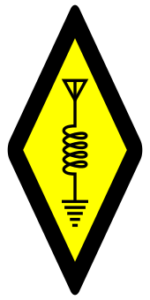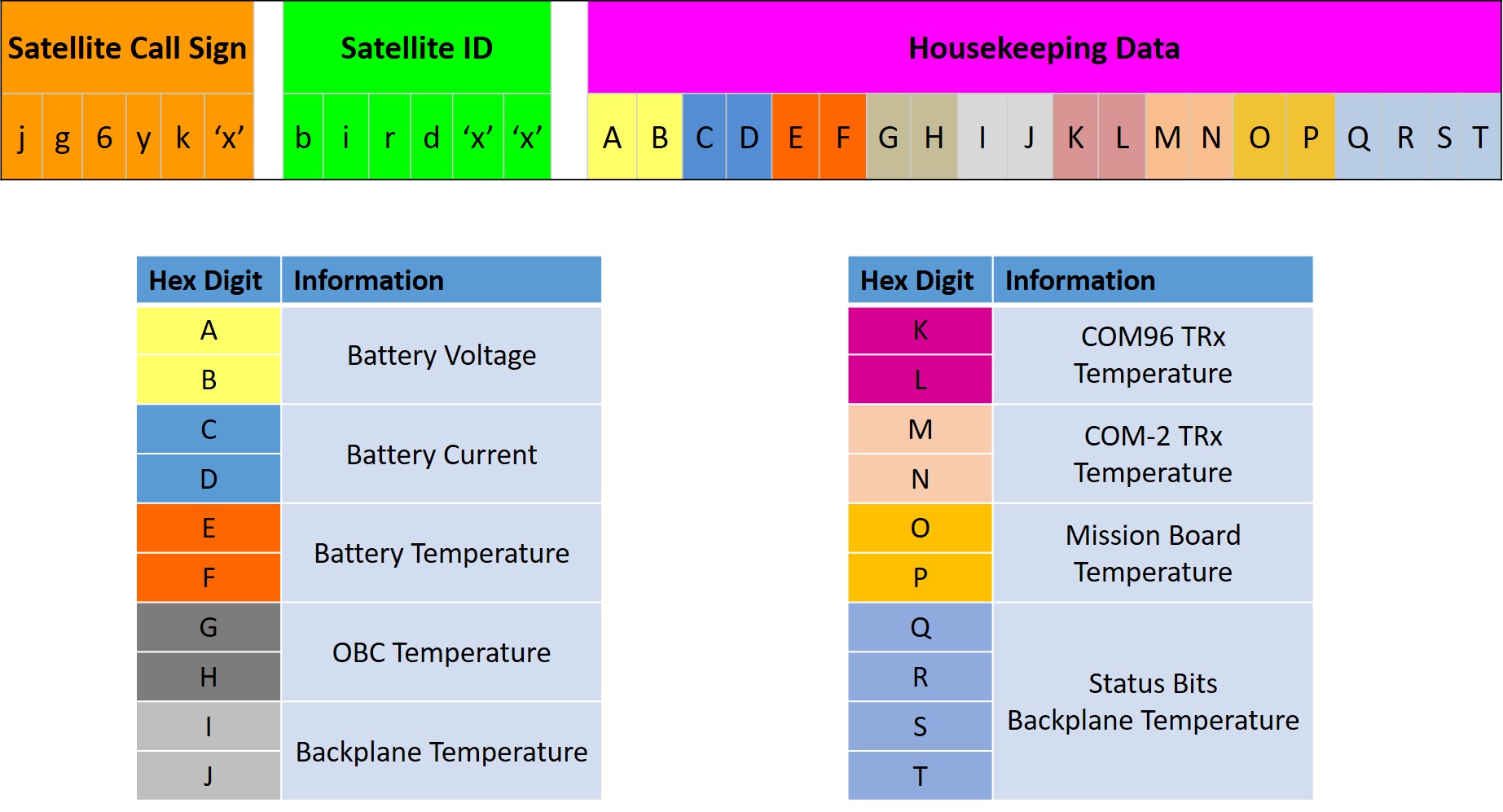Updated TLE
UITMSAT-1 1 43589U 98067PD 18228.77659872 .00010086 00000-0 15653-3 0 9999 2 43589 51.6396 76.7211 0006849 92.4995 267.6780 15.54622014 1052 MAYA-1 1 43590U 98067PE 18228.77648787 .00010199 00000-0 15804-3 0 9997 2 43590 51.6396 76.7203 0006951 93.3359 266.8427 15.54649489 988 BHUTAN-1 1 43591U 98067PF 18229.41912344 .00010390 00000-0 16055-3 0 9995 2 43591 51.6398 73.5124 0007028 96.8197 263.3593 15.54701179 1085
The TLEs are updated everyday by NORAD here.
APRS-DP Aliases
The APRS-DP transceiver of BIRDS-2 CubeSats operates at 145.825 MHz.
The aliases for the satellites are APRSAT, ARISS or the respective satellite ID (BIRDPH for Maya-1, BIRDMY for UiTMSat-1 and BIRDBT for BHUTAN-1).
The Digipeater transmits a beacon signal every 45 sec once activated.
Latest TLE
1998-067PD 1 43589U 98067PD 18223.11964464 -.00000488 00000-0 00000-0 0 9991 2 43589 51.6427 104.9423 0007687 77.9460 282.2615 15.54522043 186 1998-067PE 1 43590U 98067PE 18223.44105420 -.00000488 00000-0 00000-0 0 9998 2 43590 51.6428 103.3419 0008158 77.0546 283.1355 15.54548150 152 1998-067PF 1 43591U 98067PF 18223.37674343 -.00000489 00000-0 00000-0 0 9997 2 43591 51.6489 103.6572 0008531 76.1505 283.9569 15.54509646 144
Follow the link here for latest TLE from NORAD.
Receiving CW Beacon Signal from BIRDS-2 CubeSats
BIRDS-2 team will use CWget Software to decode the Morse Coded CW Beacon signals from the CubeSats upon release from ISS. But, in case if the signals are weak or if the signals are overlapping from the each CubeSats, the strategy adopted by the team is to record the audio signal of the beacon (we use AudaCity), and try decoding it using CW Skimmer software.
If successfully decoded, the software should display the decoded Morse character in the format described in the section below. And the 20 Hex characters of the House Keeping data can use further decoded using our decoder software BIRDS-2 CW Morse Code Beacon Analyis Software.
BIRDS-2 IARU Frequency Coordination

BIRDS-2 CubeSats operate in Amateur Band Frequency. The details of the frequency coordination with IARU can be found on the link provided below:
Bhutan: click here
Philippines: click here
Malaysia: click here
Beacon Sequence and Format of BIRDS-2 CubeSats
All three CubeSats of BIRDS-2 project will be operating with same Uplink and Downlink frequency. Each CubeSat will transmit CW Morse coded beacon signal at 437.375 MHz. Telemetry and Mission Downlink will also be carried out using the same frequency but only upon successful Uplink Command. But since the CubeSats will be released at the same time from ISS, there is a possibilities that the beacon signals from three CubeSats will interfere with each other making it difficult to decode at ground. To avoid that, one of the measures adopted by the team is as described below.
The CubeSats will be released together, which means they will Turn ON almost at the same time. Once Turned ON, one of the first thing it does is to start transmission of beacon signal to indicate it is alive. But the CubeSats are programmed in such a way that each of them will wait for different amount of time before it starts the transmission of beacon signal. The first satellite coming out of the J-SSOD will be the first to start transmission of beacon and it will remain silent for long enough to let other two satellites finish their beacon transmission. The initial sequence is as illustrated in the picture below.

The initial beacon signal period is set as 115 sec (30 sec transmission and 85 sec silent time). This is a temporary solution for the initial operation phase.
The CW Beacon signal transmitted from the CubeSats has format as shown in the picture below, which also shows the definition of each hex digit of the house keeping data in the beacon signal.

The call sign and satellite ID of respective CubeSat will precede the housekeeping data.
BIRDS-2 CubeSat Name and Call Sign
The name of the three CubeSats of BIRDS-2 project and the call sign allocated to them as as follows:
| Country | Satellite ID | Satellite Name | Call Sign |
| Bhutan | BIRD-BT | BHUTAN-1 | JG6YKL |
| Philippines | BIRD-PH | MAYA-1 | JG6YKM |
| Malaysia | BIRD-MY | UiTMSat-1 | JG6YKN |
BIRDS-2 CubeSats in Space
Three 1U CubeSats developed by 11 students from Japan, Bhutan, Philippines and Malaysia at the Kyushu Institute of Technology (KyuTech) through BIRDS-2 project under the BIRDS program has been successfully launched on a SpaceX Falcon 9 along with resupply cargo to ISS (CRS-15) in a Dragon Capsule. The Dragon has been successfully captured and the CubeSats will now await release from ISS which is expected sometime in early August.
The CubeSats will operate in Amateur bands and the team would appreciate support from amateur community throughout the world to help us with initial acquisition of beacon signal. All three CubeSats will transmit Morse Coded CW beacon at 437.375 MHz.
About BIRDS-2 CubeSats
BIRDS-2 is a CubeSat constellation project which consists of 3 1U CubeSat. Each satellite is identical to each other in its appearance as well as function. Some of the technical information about the spacecraft is provided below:
More details related to satellite operation will be posted here. Stay tuned…[Last update on August 06, 2018]
